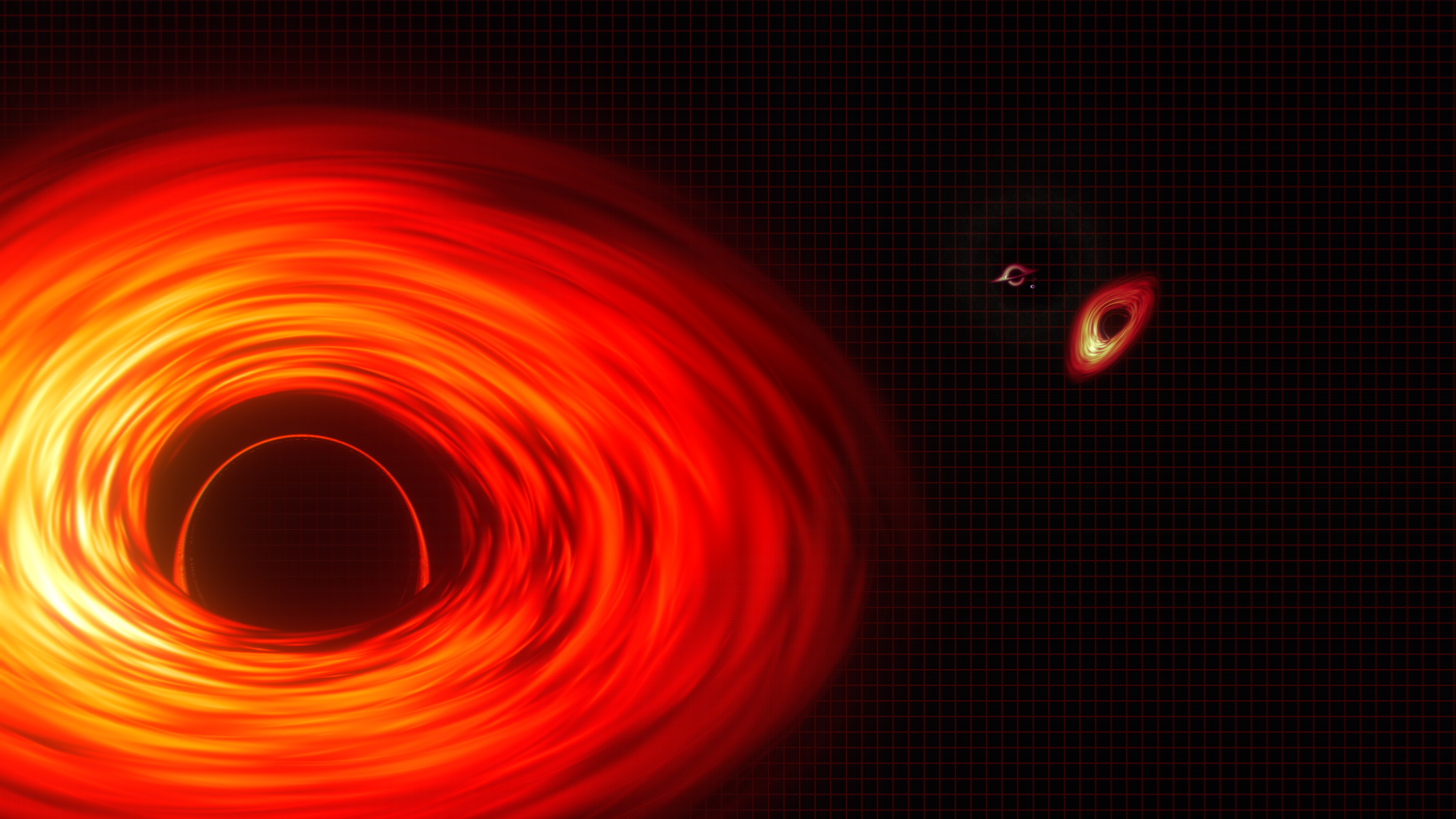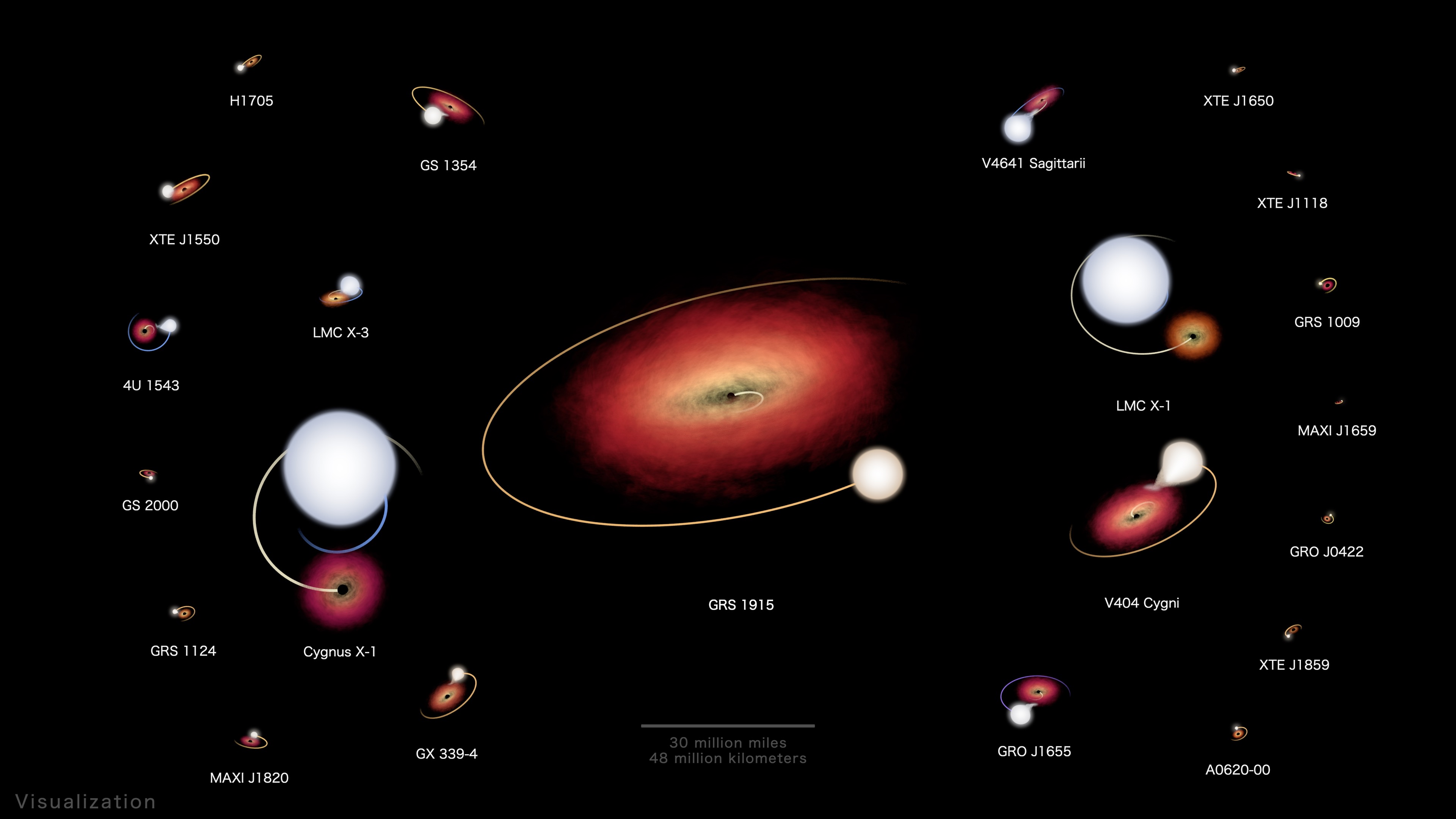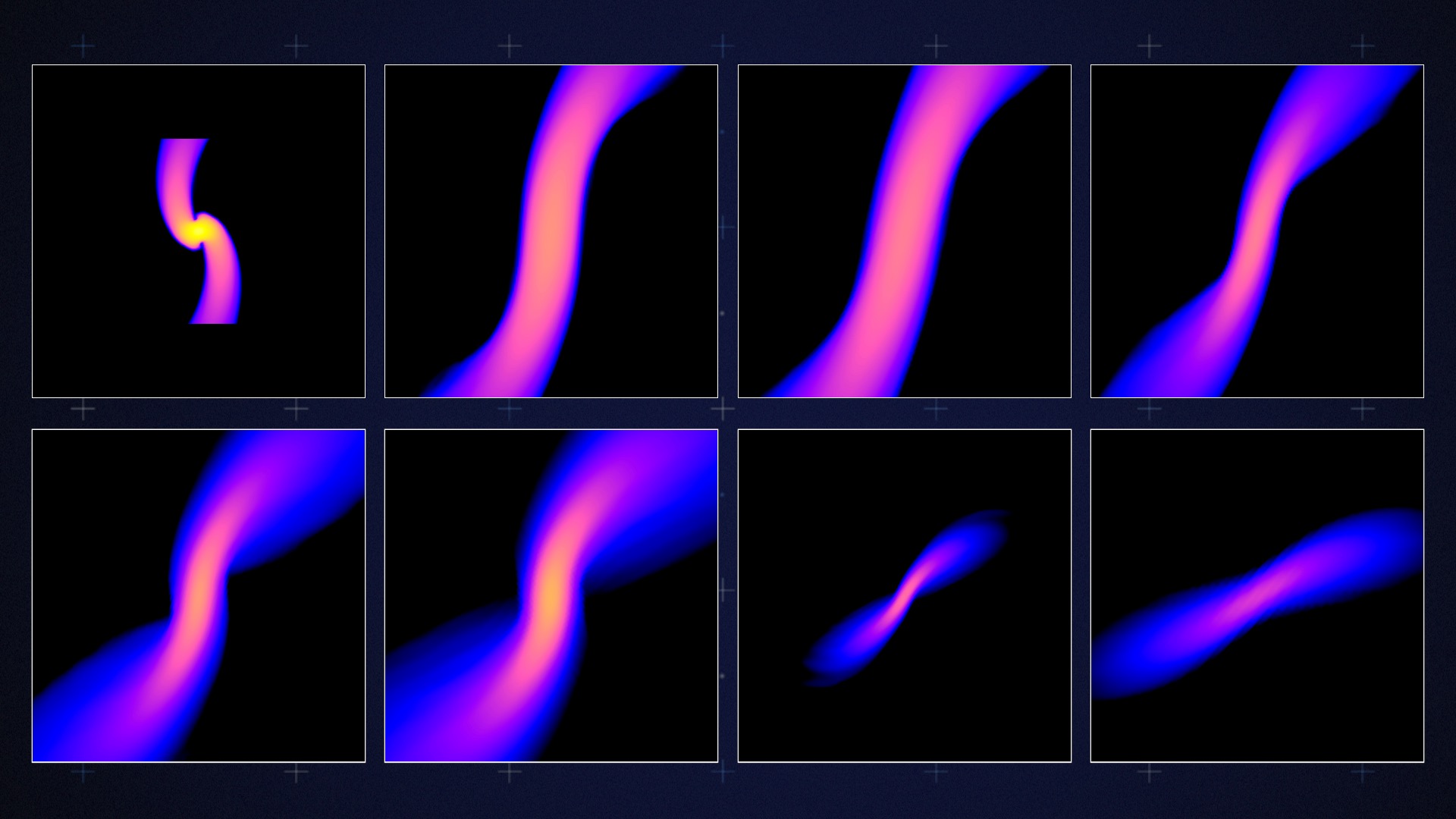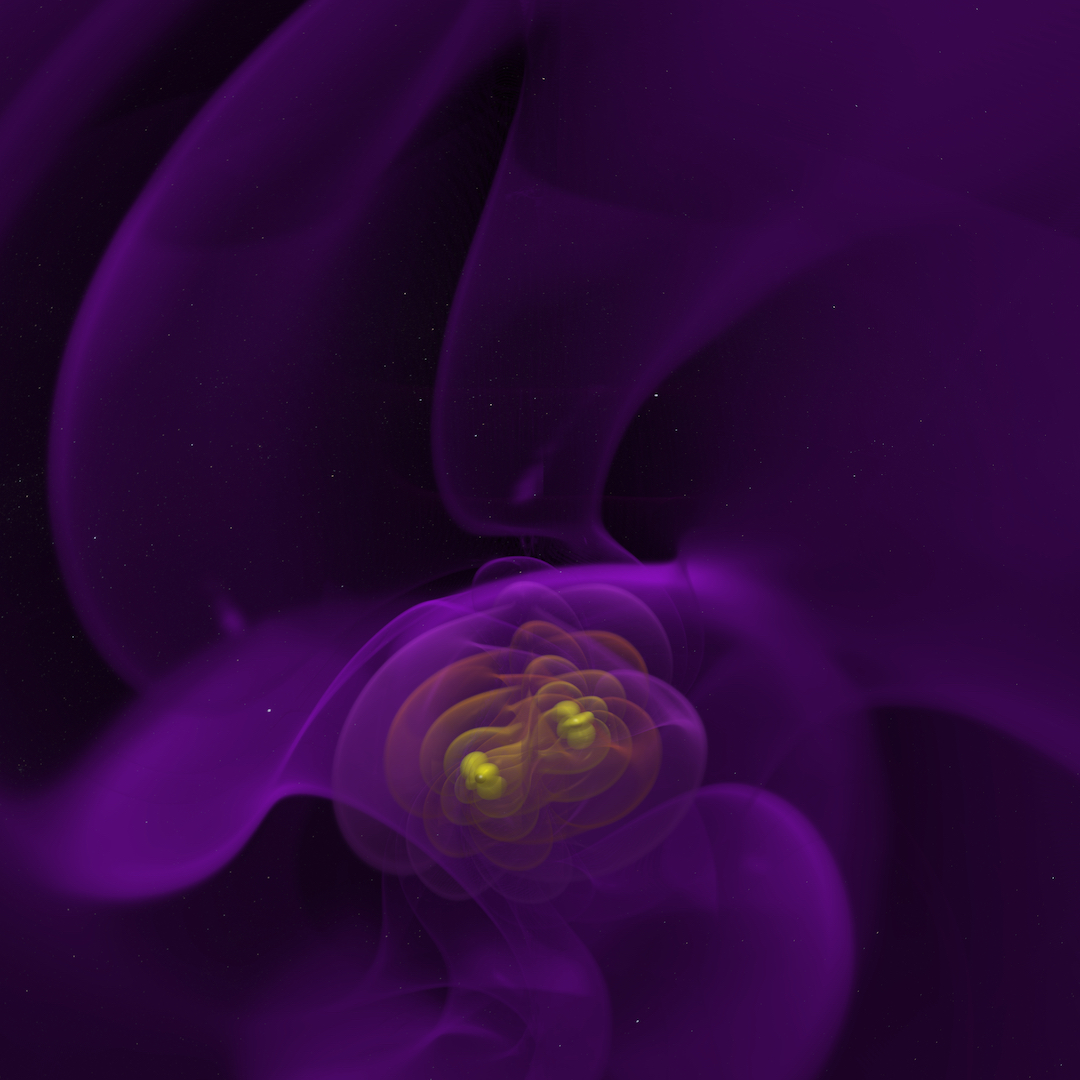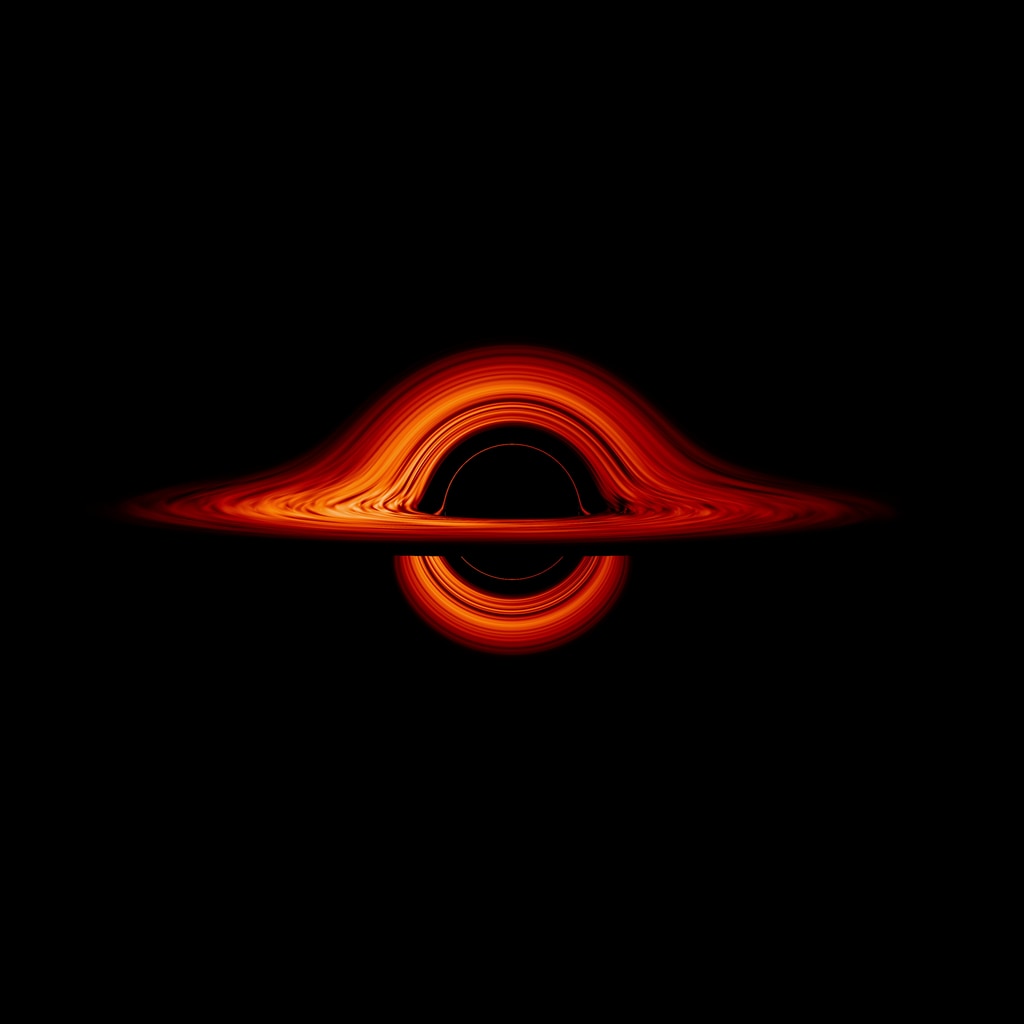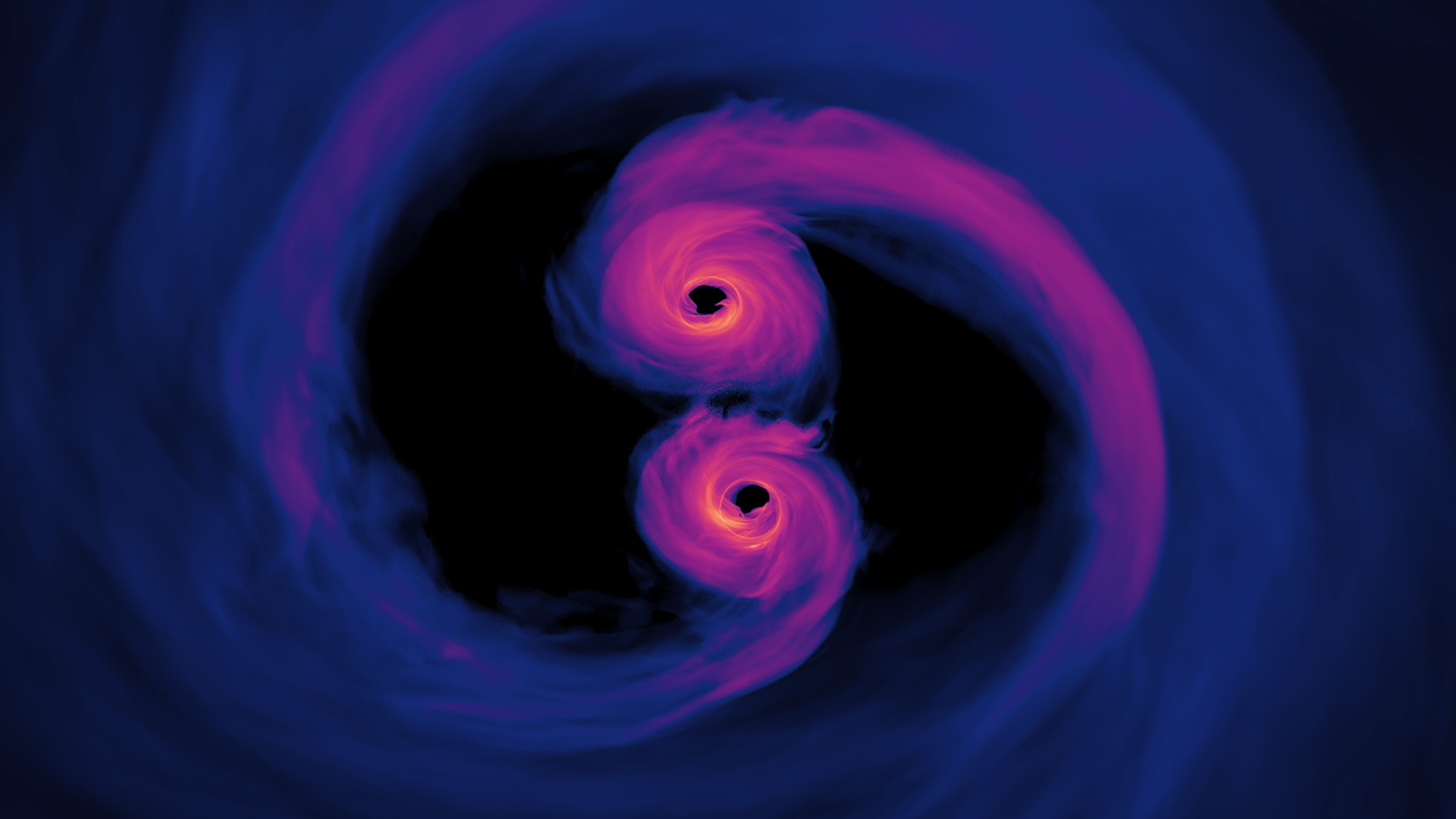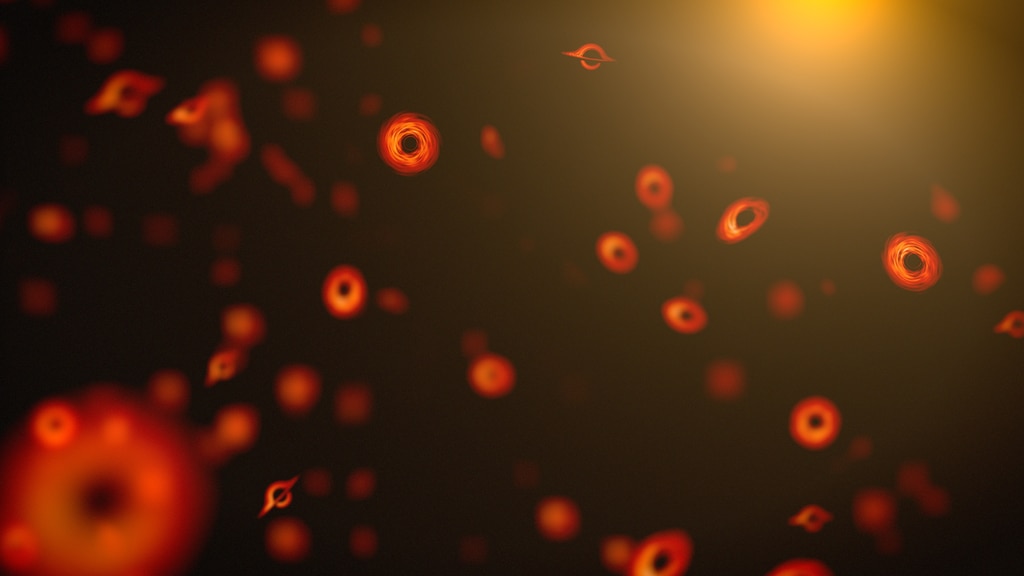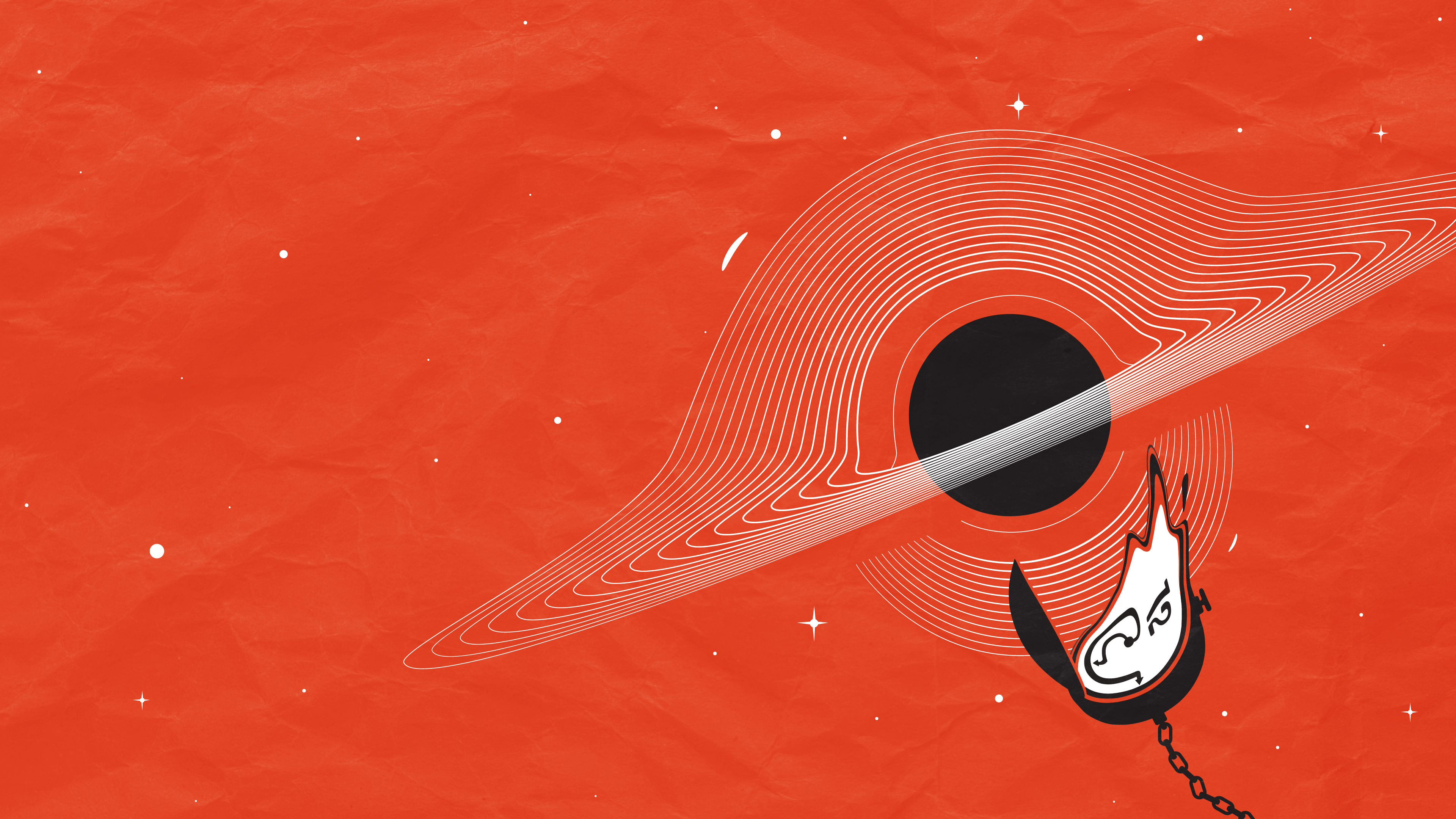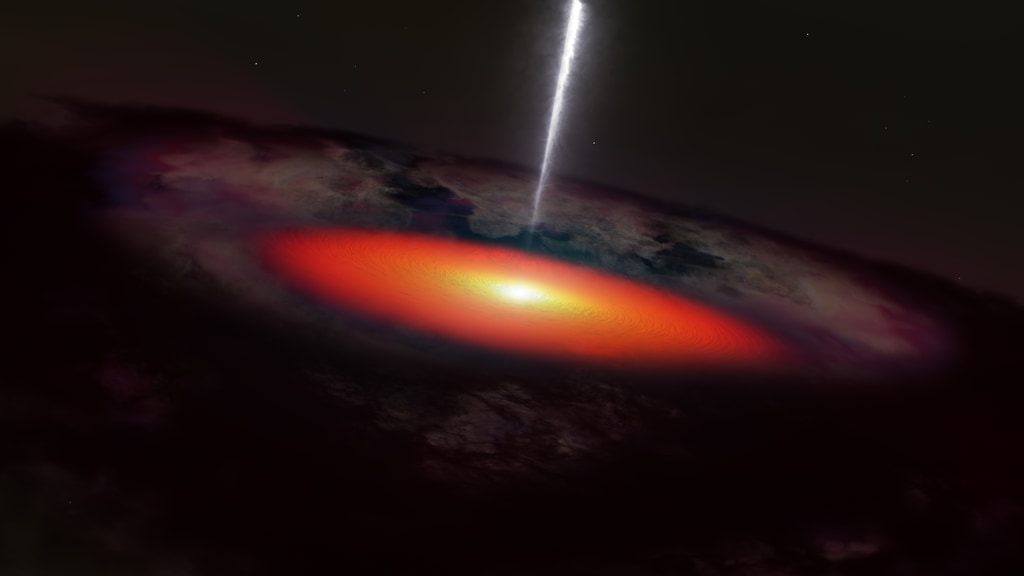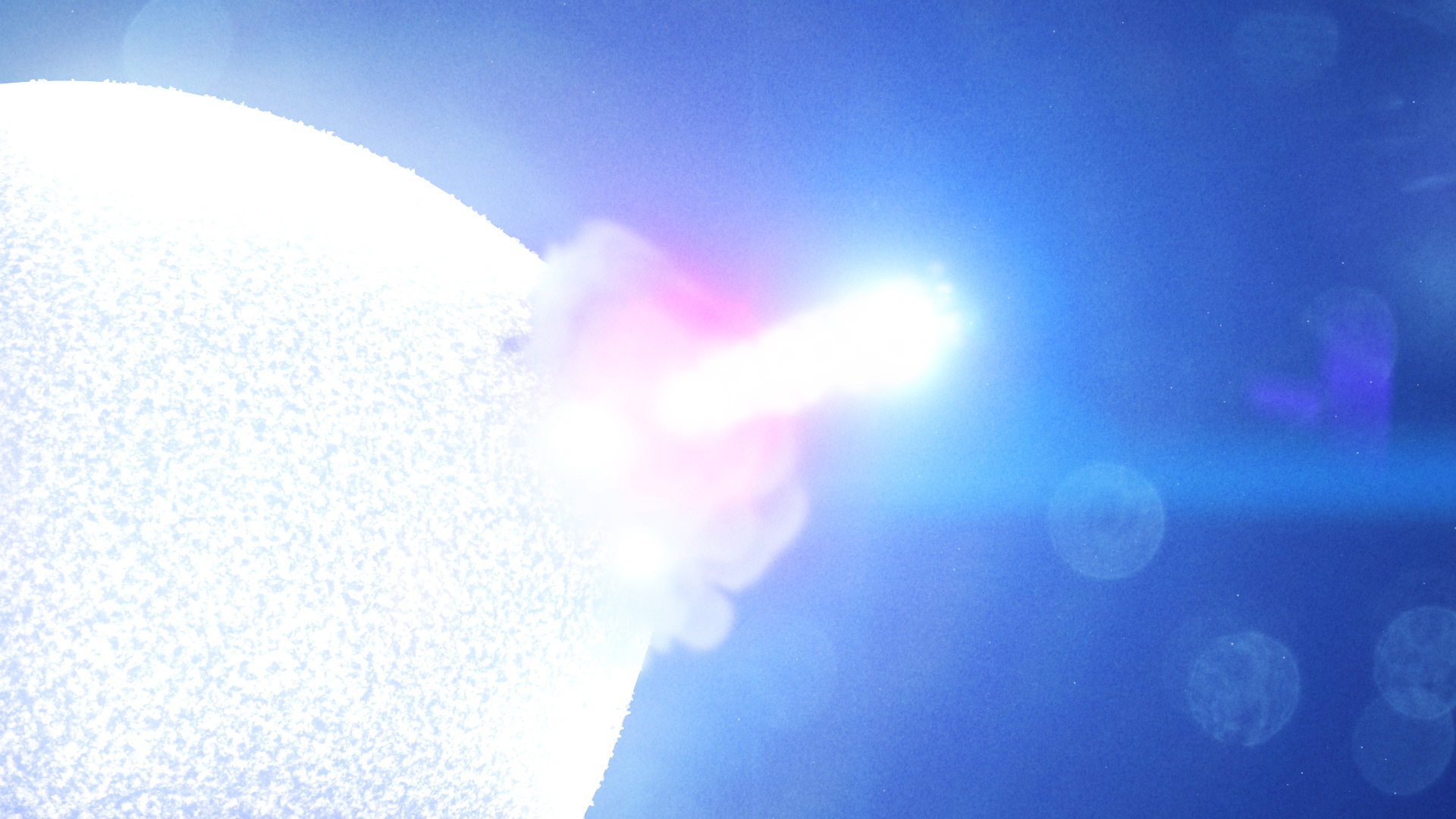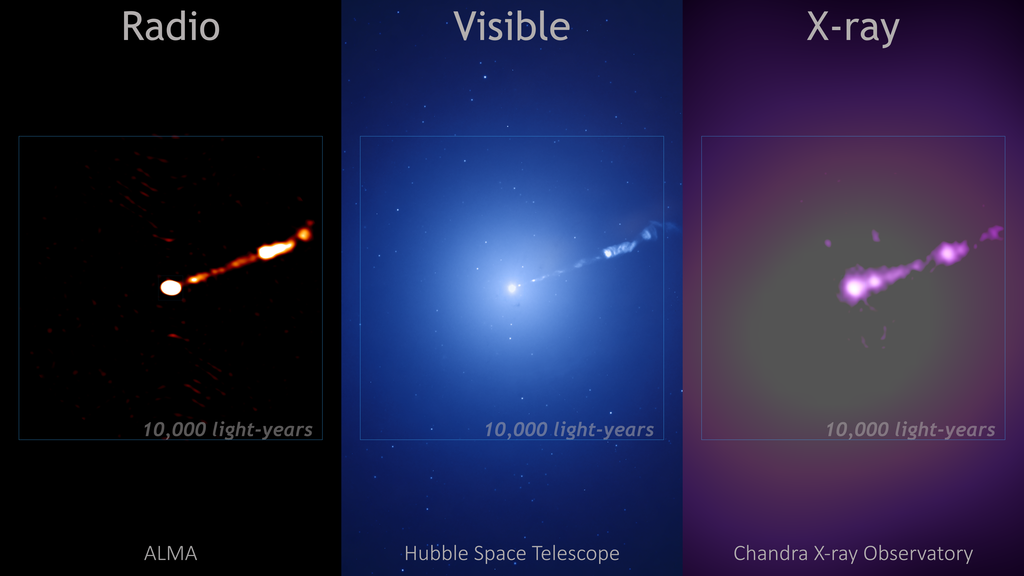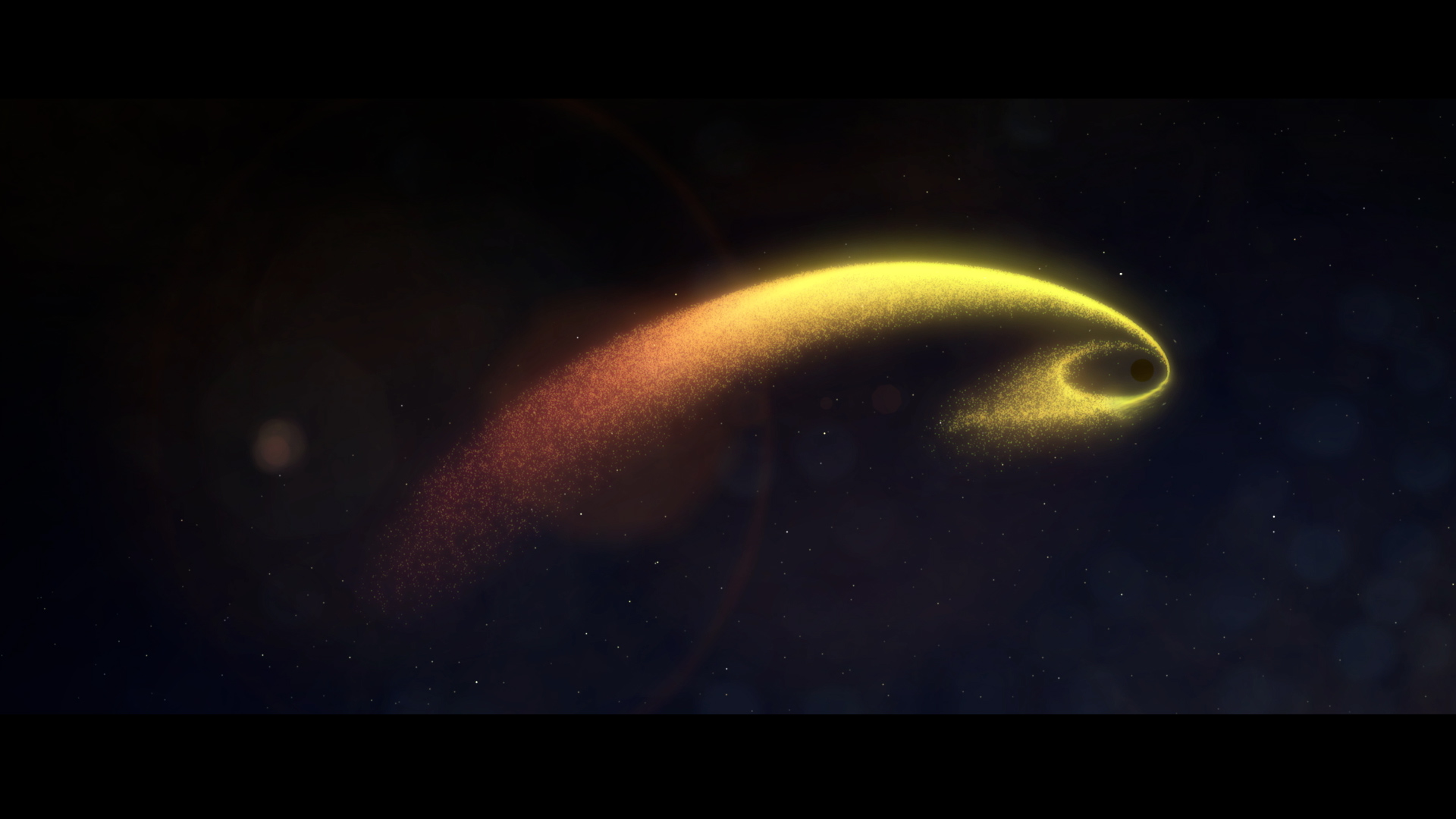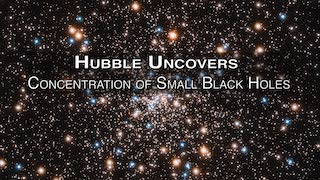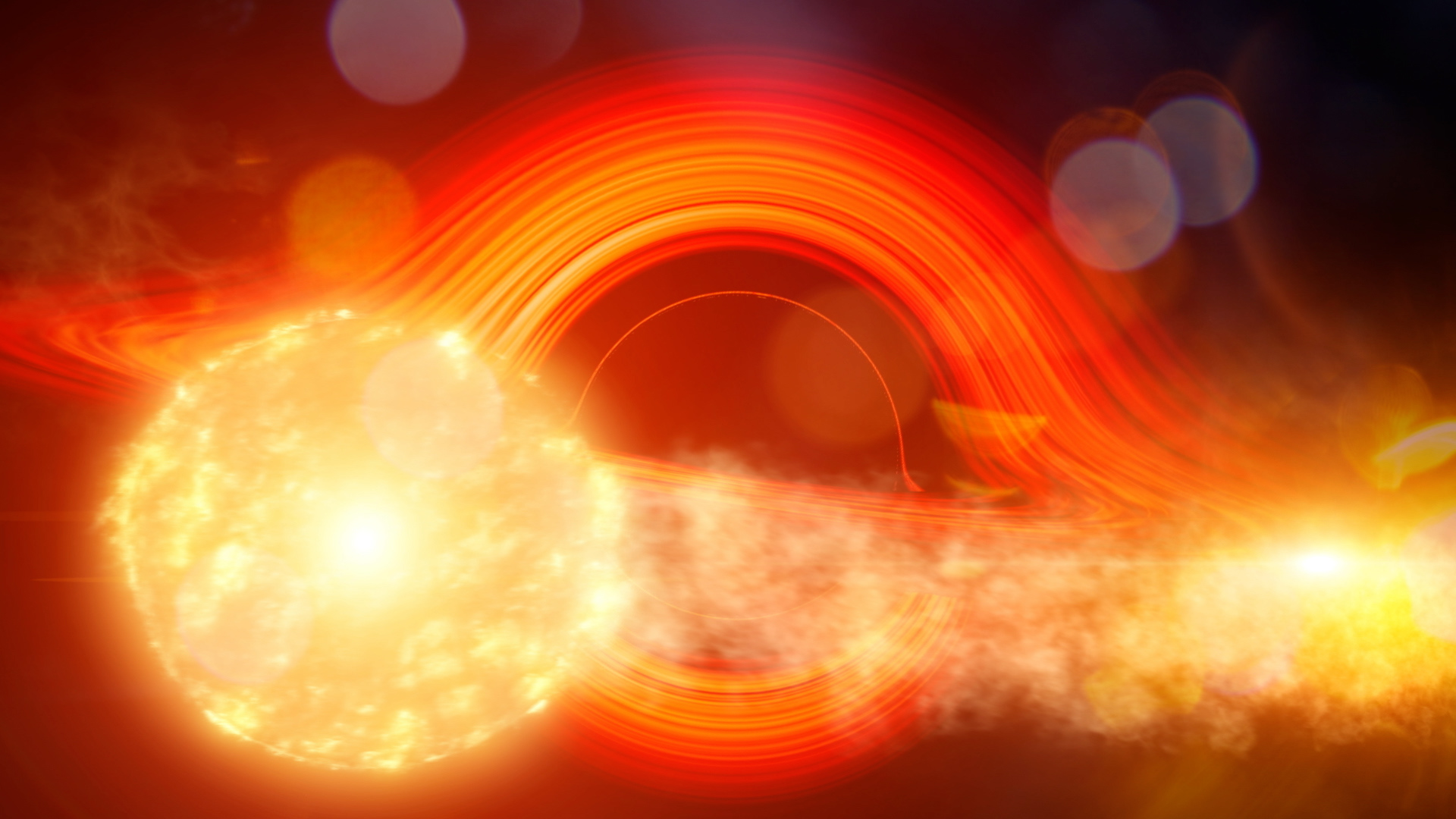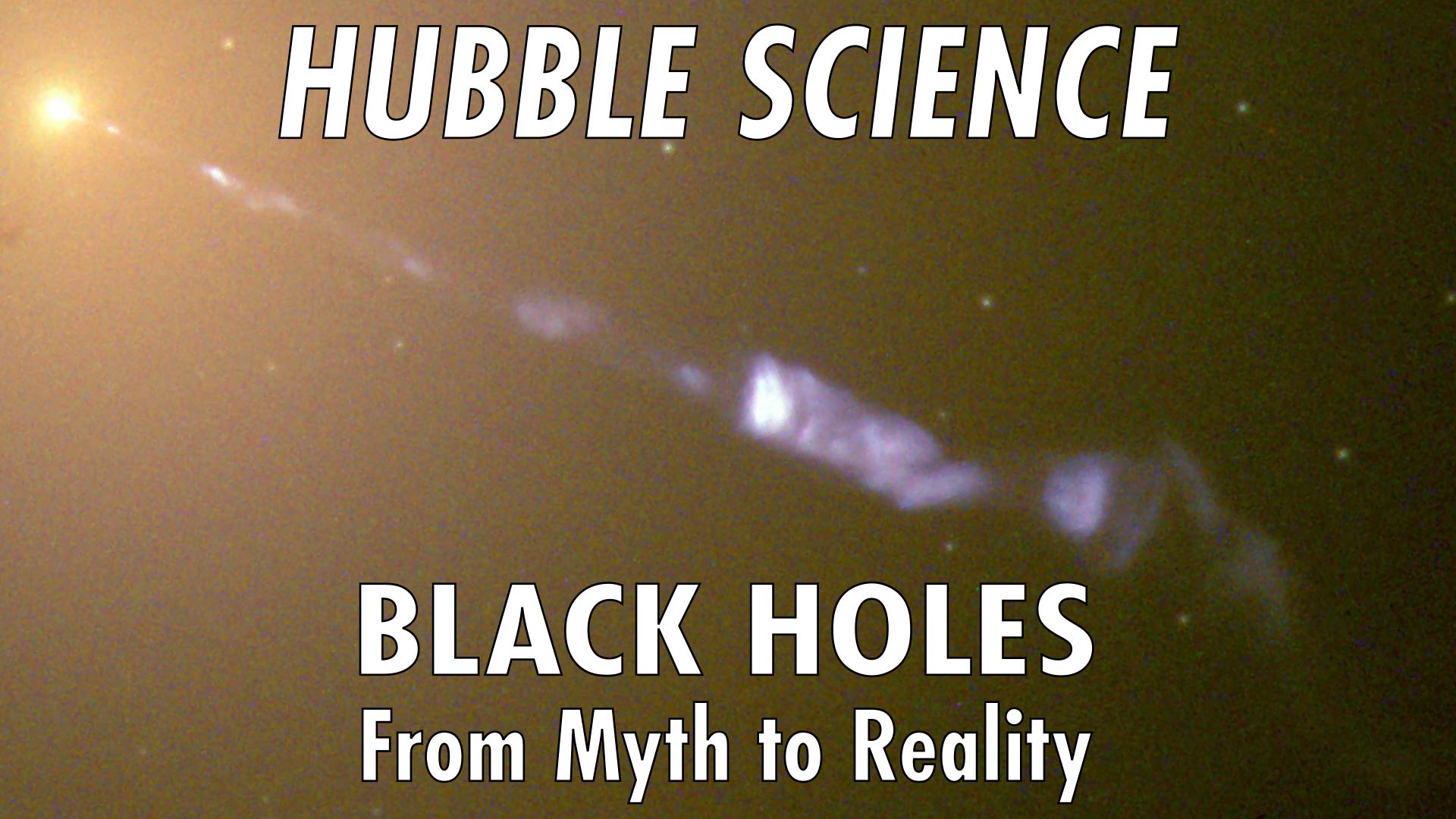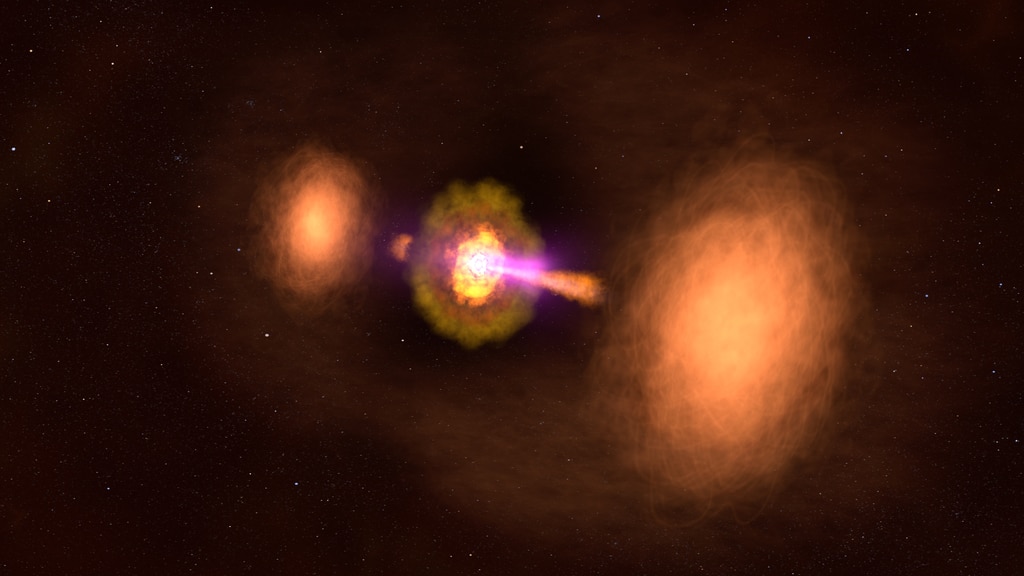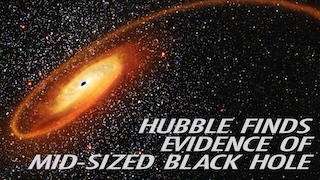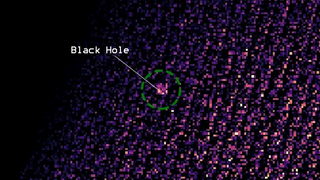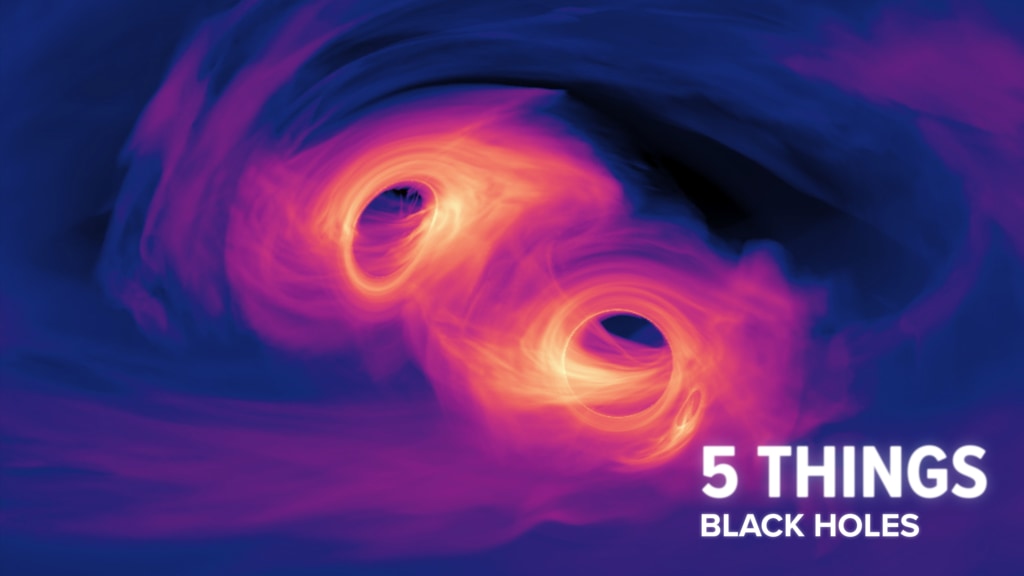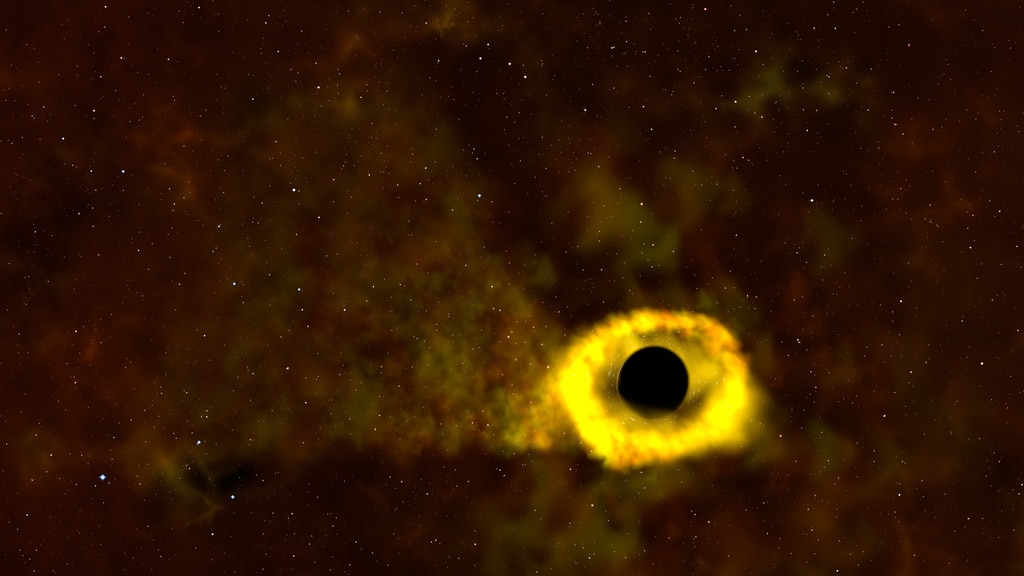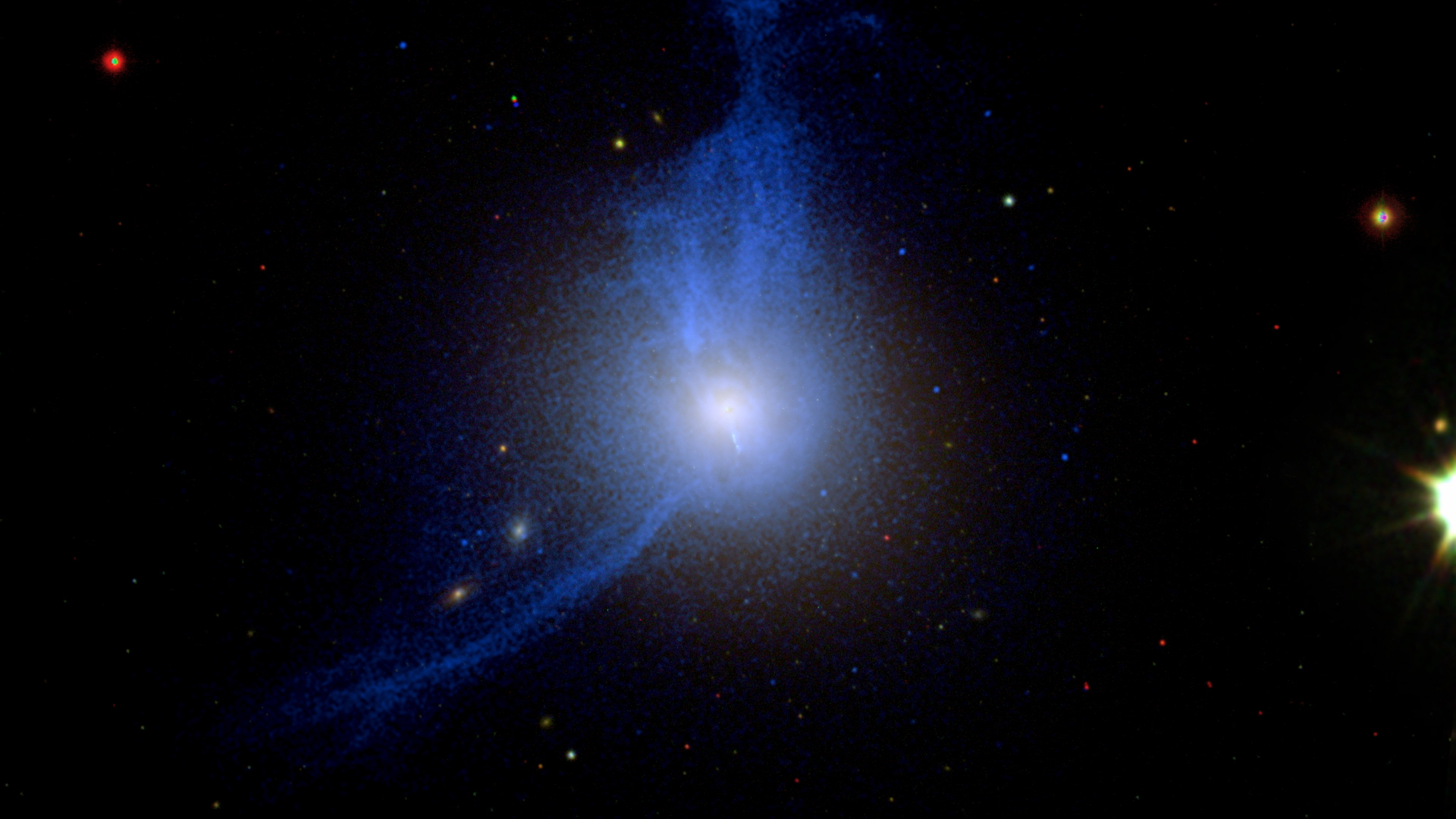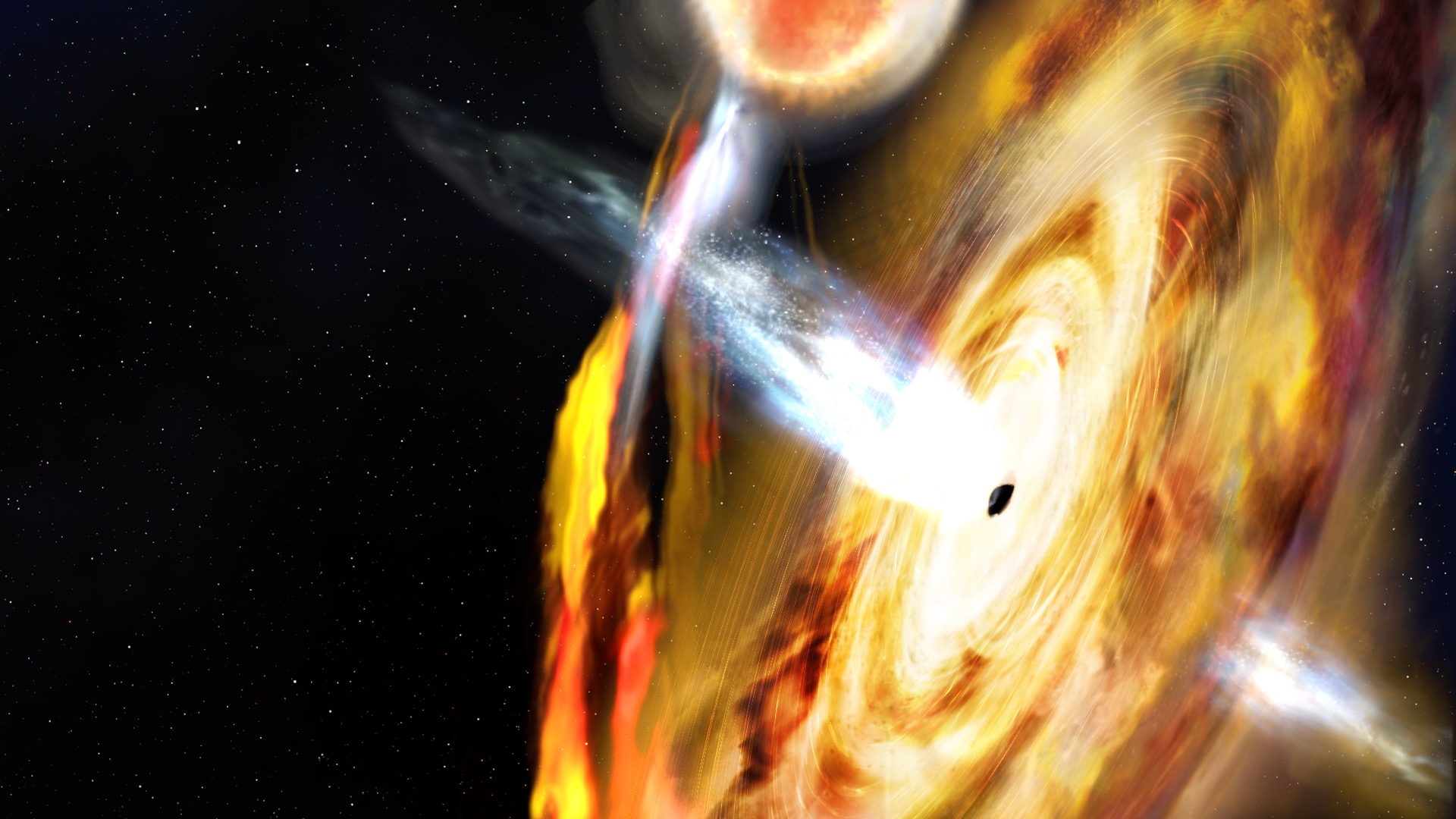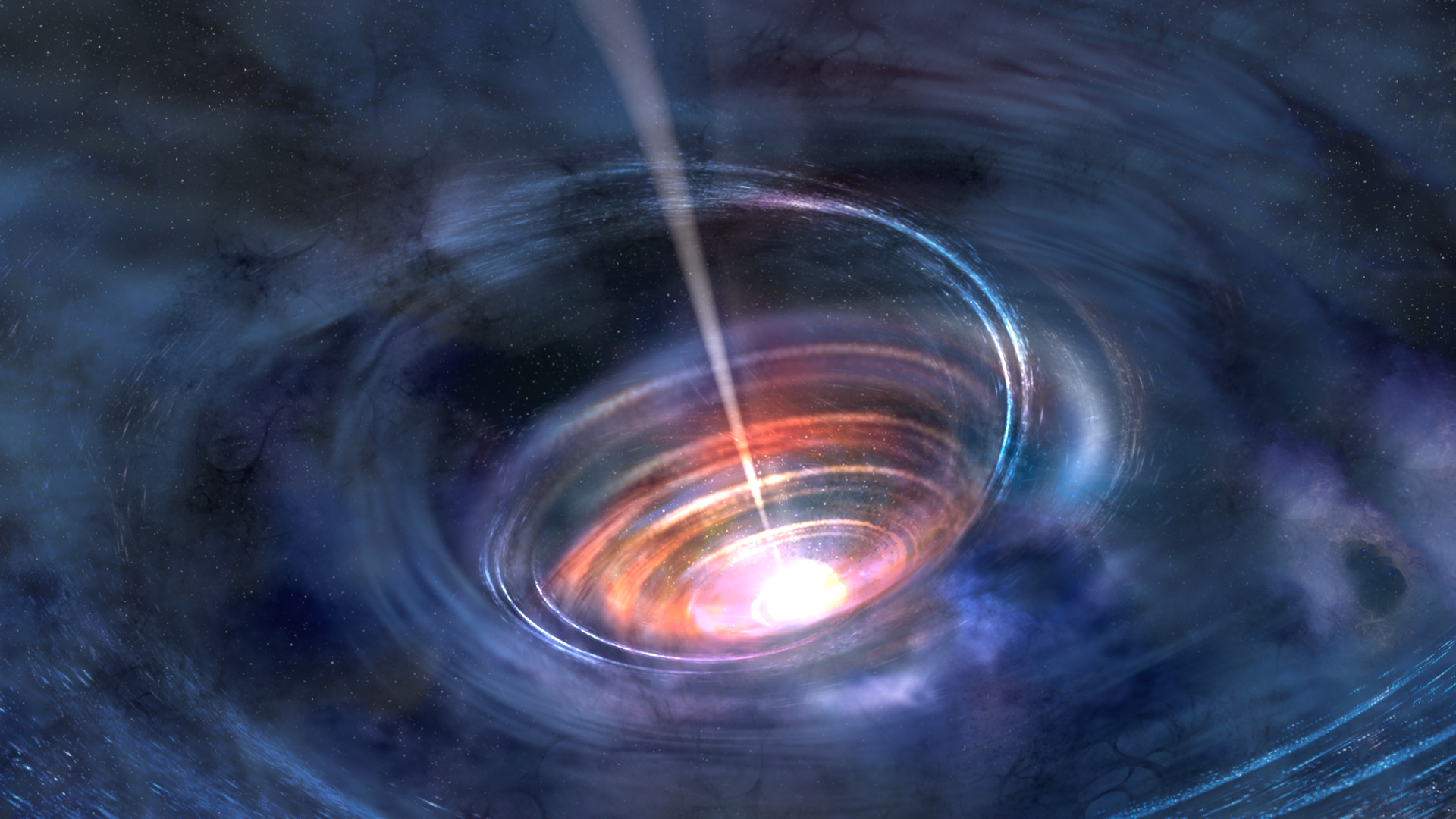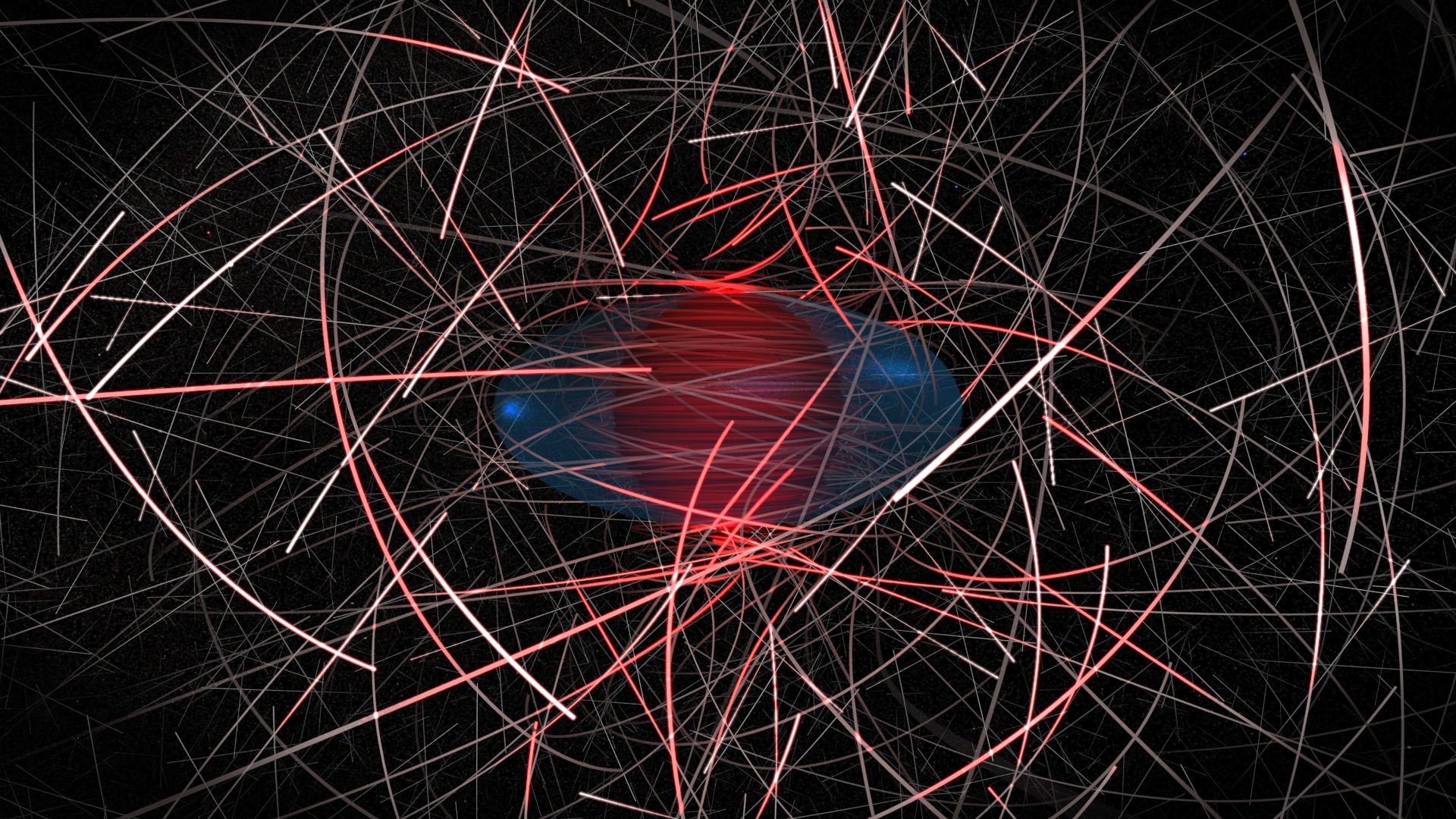Black Hole Week
Overview
This gallery brings together resources related to NASA’s Black Hole Week — videos, social media products, news stories, still images, and assets. This week is a celebration of celestial objects with gravity so intense that even light cannot escape them. Our goal is that no matter where people turn that week they will run into a black hole. (Figuratively, of course — we don’t want anyone falling in!)
Traveler Videos
The Traveler is our adventurous friend with a boundless enthusiasm for exploring the universe. A helpful narrator shares tips to keep them safe. Check out these videos to learn alongside the Traveler.
NASA's Guide To Black Hole Safety
Go to this pageHave you ever thought about visiting a black hole? We sure hope not. However, if you're absolutely convinced that a black hole is your ideal vacation spot, watch this video before you blast off to learn more about them and (more importantly) how to stay safe.You can also download a handy safety brochure, watch short clips to learn different things about black holes, and even get some short glimpses into the lives of black holes and the explorers that want to visit them. ||
NASA's Field Guide to Black Holes - Episode 1: Basic Black Holes
Go to this sectionThinking about doing some black hole watching the next time you’re on an intergalactic vacation, but you’re not quite sure where to start? Well, look no further! This series of videos shows you everything you need to know. With topics ranging from basic black holes, to fancy black holes, to giant black holes and their companions, you’ll be more than ready for your next adventure. In addition to the videos, you can also download a printable guide that has even more information. Note: While these videos can be shared in their entirety without permission, their music has been licensed and may not be excised or remixed in other products.
NASA's Field Guide to Black Holes- Episode 2: Fancy Black Holes
Go to this sectionThinking about doing some black hole watching the next time you’re on an intergalactic vacation, but you’re not quite sure where to start? Well, look no further! This series of videos shows you everything you need to know. With topics ranging from basic black holes, to fancy black holes, to giant black holes and their companions, you’ll be more than ready for your next adventure. In addition to the videos, you can also download a printable guide that has even more information. Note: While these videos can be shared in their entirety without permission, their music has been licensed and may not be excised or remixed in other products.
NASA's Field Guide to Black Holes - Episode 3: Social Black Holes
Go to this sectionThinking about doing some black hole watching the next time you’re on an intergalactic vacation, but you’re not quite sure where to start? Well, look no further! This series of videos shows you everything you need to know. With topics ranging from basic black holes, to fancy black holes, to giant black holes and their companions, you’ll be more than ready for your next adventure. In addition to the videos, you can also download a printable guide that has even more information. Note: While these videos can be shared in their entirety without permission, their music has been licensed and may not be excised or remixed in other products.
NASA's Field Guide to Black Holes - Episode 4: Social Supermassive Black Holes
Go to this sectionThinking about doing some black hole watching the next time you’re on an intergalactic vacation, but you’re not quite sure where to start? Well, look no further! This series of videos shows you everything you need to know. With topics ranging from basic black holes, to fancy black holes, to giant black holes and their companions, you’ll be more than ready for your next adventure. In addition to the videos, you can also download a printable guide that has even more information. Note: While these videos can be shared in their entirety without permission, their music has been licensed and may not be excised or remixed in other products.
NASA's Field Guide to Black Holes - Episode 5: Black Hole Records
Go to this sectionThinking about doing some black hole watching the next time you’re on an intergalactic vacation, but you’re not quite sure where to start? Well, look no further! This series of videos shows you everything you need to know. With topics ranging from basic black holes, to fancy black holes, to giant black holes and their companions, you’ll be more than ready for your next adventure. In addition to the videos, you can also download a printable guide that has even more information. Note: While these videos can be shared in their entirety without permission, their music has been licensed and may not be excised or remixed in other products.
Other Traveler Media
In addition to videos, the Traveler and their friends are featured in a number of other multimedia resources. Check out these items which include safety and field guides, postcards, and wallpaper.
Black Hole Week Assets
Go to this pageThis page will introduce you to the world, characters, colors, and fonts of Black Hole Week. NASA celebrated Black Hole Week in 2019, 2021 and May, 2022.The world of Black Hole Week is bold, colorful, and a bit retro. It's also populated by a fun bunch of characters, including a little blue explorer (called the "Traveler") and their black hole friends. Below, you'll find tons of helpful images, GIFs, and other materials to get you going if you want to join in!If you are having trouble downloading the ZIP or AI files, please contact Barb Mattson: barb.mattson@nasa.gov ||
Black Hole Week: Traveler and Friends GIFs
Go to this pageBlack Hole WeekThis page provides social media assets used during previous celebrations of Black Hole Week. The world of Black Hole Week is populated by a fun bunch of characters, including a little blue explorer (called the Traveler) and their cosmic friends.Below, you'll find tons of GIFs to download and use if you want to join in! ||
NASA's Field Guide to Black Holes - Printable Guide
Go to this sectionThinking about doing some black hole watching the next time you’re on an intergalactic vacation, but you’re not quite sure where to start? Well, look no further! This series of videos shows you everything you need to know. With topics ranging from basic black holes, to fancy black holes, to giant black holes and their companions, you’ll be more than ready for your next adventure. In addition to the videos, you can also download a printable guide that has even more information. Note: While these videos can be shared in their entirety without permission, their music has been licensed and may not be excised or remixed in other products.
NASA's Guide To Black Hole Safety - Safety Brochure
Go to this sectionHave you ever thought about visiting a black hole? We sure hope not. However, if you're absolutely convinced that a black hole is your ideal vacation spot, watch this video before you blast off to learn more about them and (more importantly) how to stay safe. You can also download a handy safety brochure, watch short clips to learn different things about black holes, and even get some short glimpses into the lives of black holes and the explorers that want to visit them.
Black Hole Safety: Desktop & Phone Wallpaper
Go to this pageSo you’ve planned your trip to a black hole, you’ve packed your bags, and you’ve even watched the pre-flight safety video. If you haven’t yet watched the video, however, we highly recommend you click the image below. Don’t worry, we’ll wait.Now then, want to make black hole travel an even bigger part of your daily life? Wishing that black holes actually WERE portals to dimensions filled with unicorns and space potatoes? Download these phone and desktop wallpapers to fill your screens. ||
Black Hole Travel Postcards
Go to this pageWish you were here! Now, you can send your friends postcards from one of the most extreme vacation spots in the universe—or at least convince them you've gone even though you stayed safe at home. ||
Black Hole Visualizations
Since we can’t visit a black hole, visualizations allow us to see aspects of their complex physics at work. Check out the weird and wonderful things we’ve learned using supercomputers and complicated algorithms.
Black Hole Week: Black Hole GIFs
Go to this pageBlack Hole WeekThis page provides social media assets used during previous celebrations of Black Hole Week. Join in! Below, you'll find many GIFs to use. ||
Black Hole Desktop & Phone Wallpapers
Go to this pageWhile black holes can’t emit their own light, matter surrounding and falling toward it can create quite a light show. Here you’ll find a collection of data visualizations, illustrations, and telescope images of black hole environments. Download these phone and desktop wallpapers for your screens. ||
NASA Black Hole Visualization Takes Viewers Beyond the Brink
Go to this pageIn this flight toward a supermassive black hole, labels highlight many of the fascinating features produced by the effects of general relativity along the way. This supercomputer visualization tracks a camera as it approaches, briefly orbits, and then crosses the event horizon — the point of no return — of a supersized black hole similar in mass to the one at the center of our galaxy. Credit: NASA's Goddard Space Flight Center/J. Schnittman and B. PowellMusic: “Tidal Force,” Thomas Daniel Bellingham [PRS], Universal Production Music“Memories” from Digital Juice“Path Finder,” Eric Jacobsen [TONO] and Lorenzo Castellarin [BMI], Universal Production MusicWatch this video on the NASA Goddard YouTube channel.Complete transcript available. || 14576_BHPlunge_Explain_Still.jpg (3840x2160) [1.2 MB] || 14576_PageThumbnail.jpg (3840x2160) [1.2 MB] || 14576_PageThumbnail_searchweb.png (180x320) [85.0 KB] || 14576_PageThumbnail_thm.png (80x40) [9.6 KB] || 14576_BHPlunge_Explainer_Captions.en_US.srt [2.5 KB] || 14576_BHPlunge_Explainer_Captions.en_US.vtt [2.4 KB] || 14576_BHPlunge_Explainer_1080.mp4 [319.5 MB] || 14576_BHPlunge_Explainer_4k.mp4 [1.5 GB] || 14576_BHPlunge_Explainer_4kYouTube.mp4 [3.0 GB] || 14576_BHPlunge_Explainer_ProRes_3840x2160_2997.mov [12.8 GB] ||
NASA Animation Sizes Up the Universe’s Biggest Black Holes
Go to this pageAll monster black holes are not equal. Watch this video to see how they compare to each other and to our solar system. The black holes shown, which range from 100,000 to more than 60 billion times our Sun’s mass, are scaled according to the sizes of their shadows – a circular zone about twice the size of their event horizons. Only one of these colossal objects resides in our own galaxy, and it lies 26,000 light-years away. Smaller black holes are shown in bluish colors because their gas is expected to be hotter than that orbiting larger ones. Scientists think all of these objects shine most intensely in ultraviolet light. Credit: NASA's Goddard Space Flight Center Conceptual Image LabMusic: "In the Stars" from Universal Production MusicWatch this video on the NASA Goddard YouTube channel.Complete transcript available. || SMBH_Scale_Still_1.jpg (3840x2160) [3.0 MB] || SMBH_Scale_Still_1_searchweb.png (180x320) [71.4 KB] || SMBH_Scale_Still_1_thm.png (80x40) [4.2 KB] || 14335_Supermassive_Black_Hole_Scale_Comparison_V2_1080_Best.mp4 (1920x1080) [166.0 MB] || 14335_Supermassive_Black_Hole_Scale_Comparison_V2_1080.mp4 (1920x1080) [102.7 MB] || 14335_Supermassive_Black_Hole_Scale_Comparison_V2_1080_Best.webm (1920x1080) [13.3 MB] || 14335_Supermassive_Black_Hole_Scale_Comparison_V2_ProRes_3840x2160_60.mov (3840x2160) [12.6 GB] || 14335_Supermassive_Black_Hole_Scale_Comparison_V2_4k_Best.mp4 (3840x2160) [314.2 MB] || 14335_Supermassive_Black_Hole_Scale_Comparison_SRT_Captions.en_US.srt [2.2 KB] || 14335_Supermassive_Black_Hole_Scale_Comparison_SRT_Captions.en_US.vtt [2.2 KB] ||
NASA's Black Hole Orrery
Go to this pageLearn more about the best-known black hole systems in our galaxy and its neighbor, the Large Magellanic Cloud. This visualization presents 22 X-ray binary systems that host confirmed black holes at the same scale, with their orbits sped up by about 22,000 times. The view of each system reflects how we see it from Earth. Star colors ranging from blue-white to reddish represent temperatures from 5 times hotter to 45% cooler than our Sun. In most of these systems, a stream of matter from the star forms an accretion disk around the black hole. In others, like the famous system called Cygnus X-1, the star produces a hefty outflow that is partly swept up by the black hole’s gravity to form the disk. The accretion disks use a different color scheme because they sport even higher temperatures than the stars. The largest disk shown, belonging to a binary called GRS 1915, spans a distance greater than that separating Mercury from our Sun. The black holes themselves are shown larger than in reality using spheres scaled to reflect their masses.Credit: NASA's Goddard Space Flight Center and Scientific Visualization StudioMusic: "Event Horizon" from Gravity. Written and produced by Lars LeonhardWatch this video on the NASA Goddard YouTube channel.Complete transcript available. || Black_Hole_Orrery_Still.jpg (3840x2160) [321.9 KB] || Black_Hole_Orrery_Still_searchweb.png (320x180) [25.6 KB] || Black_Hole_Orrery_Still_thm.png (80x40) [4.1 KB] || 14149_Black_Hole_Orrery_FINAL_1080.mp4 (1920x1080) [118.8 MB] || 14149_Black_Hole_Orrery_FINAL_1080.webm (1920x1080) [12.4 MB] || 14149_Black_Hole_Orrery_ProRes_3840x2160_2997.mov (3840x2160) [1.9 GB] || 14149_Black_Hole_Orrery_FINAL_4k_Best.mp4 (3840x2160) [379.2 MB] || 14149_Black_Hole_Orrery_FINAL_4k.mp4 (3840x2160) [176.7 MB] || 14149_Black_Hole_Orrery_SRT_Captions.en_US.srt [1.9 KB] || 14149_Black_Hole_Orrery_SRT_Captions.en_US.vtt [1.9 KB] ||
Supercomputer Simulations Test Star-destroying Black Holes
Go to this pageWatch eight model stars stretch and deform as they approach a virtual black hole 1 million times the mass of the Sun. The black hole’s gravity rips some stars apart into a stream of gas, a phenomenon called a tidal disruption event. Others manage to withstand their close encounters. These simulations show that destruction and survival depend on the stars’ initial densities. Yellow represents the greatest densities, blue the least dense. Credit: NASA's Goddard Space Flight Center/Taeho Ryu (MPA)Music: "Lava Flow Instrumental" from Universal Production MusicWatch this video on the NASA Goddard YouTube channel.Complete transcript available. || 14000_TDE_Simulation_Still.jpg (1920x1080) [205.0 KB] || 14000_TDE_Simulation_Still_searchweb.png (320x180) [42.8 KB] || 14000_TDE_Simulation_Still_thm.png (80x40) [4.9 KB] || 14000_TDE_Simulation_ProRes_1920x1080_2997.mov (1920x1080) [2.0 GB] || 14000_TDE_Simulation_Best_1080.mp4 (1920x1080) [357.4 MB] || 14000_TDE_Simulation_1080.mp4 (1920x1080) [164.7 MB] || 14000_TDE_Simulation_1080.webm (1920x1080) [17.6 MB] || 14000_TDE_Simulation_SRT_Captions.en_US.srt [2.7 KB] || 14000_TDE_Simulation_SRT_Captions.en_US.vtt [2.7 KB] ||
NASA Visualization Probes the Doubly Warped World of Binary Black Holes
Go to this pageExplore how the extreme gravity of two orbiting supermassive black holes distorts our view. In this visualization, disks of bright, hot, churning gas encircle both black holes, shown in red and blue to better track the light source. The red disk orbits the larger black hole, which weighs 200 million times the mass of our Sun, while its smaller blue companion weighs half as much. Zooming into each black hole reveals multiple, increasingly warped images of its partner. Watch to learn more. Credit: NASA’s Goddard Space Flight Center/Jeremy Schnittman and Brian P. PowellMusic: "Gravitational Field" from Orbit. Written and produced by Lars Leonhard.Watch this video on the NASA Goddard YouTube channel.Complete transcript available. || Supermassive_BlackHole_Binary_Still.jpg (3840x2160) [726.7 KB] || Supermassive_BlackHole_Binary_Still_searchweb.png (320x180) [18.9 KB] || Supermassive_BlackHole_Binary_Still_thm.png (80x40) [2.5 KB] || 13831_BlackHoleBinary_Simulation_1080.mp4 (1920x1080) [234.7 MB] || 13831_BlackHoleBinary_Simulation_1080.webm (1920x1080) [23.8 MB] || 13831_BlackHoleBinary_Simulation_ProRes_3840x2160_30.mov (3840x2160) [4.1 GB] || 13831_BlackHoleBinary_Simulation_4k_Best.mp4 (3840x2160) [936.6 MB] || 13831_BlackHoleBinary_Simulation_4k.mp4 (3840x2160) [348.3 MB] ||
Gravitational Wave Simulations of Merging Black Holes: 1080 and 8k Resolutions
Go to this pageText-on-screen explainer of the above.Credit: NASA/Bernard J. Kelly (Goddard and Univ. of Maryland Baltimore County), Chris Henze (Ames) and Tim Sandstrom (CSC Government Solutions LLC)Complete transcript available. || BHMergerToS_Still.jpg (1920x1080) [140.6 KB] || BlackHoleMerger_GravitationalWaveSimulation_Text-On-Screen_1080.mp4 (1920x1080) [68.3 MB] || BlackHoleMerger_GravitationalWaveSimulation_Text-On-Screen_Best_1080.mp4 (1920x1080) [151.8 MB] || BlackHoleMerger_GravitationalWaveSimulation_Text-On-Screen_ProRes_1920x1080.mov (1920x1080) [1020.3 MB] || BlackHoleMerger_GravitationalWaveSimulation_Text-On-Screen_1080.webm (1920x1080) [6.8 MB] || BlackHoleMerger_GravitationalWaveSimulation_Text-On-Screen_ProRes_1920x1080.en_US.srt [915 bytes] || BlackHoleMerger_GravitationalWaveSimulation_Text-On-Screen_ProRes_1920x1080.en_US.vtt [928 bytes] ||
Black Hole Accretion Disk Visualization
Go to this pageThis movie shows a complete revolution around a simulated black hole and its accretion disk following a path that is perpendicular to the disk. The black hole’s extreme gravitational field redirects and distorts light coming from different parts of the disk, but exactly what we see depends on our viewing angle. The greatest distortion occurs when viewing the system nearly edgewise. As our viewpoint rotates around the black hole, we see different parts of the fast-moving gas in the accretion disk moving directly toward us. Due to a phenomenon called "relativistic Doppler beaming," gas in the disk that's moving toward us makes that side of the disk appear brighter, the opposite side darker. This effect disappears when we're directly above or below the disk because, from that angle, none of the gas is moving directly toward us.When our viewpoint passes beneath the disk, it looks like the gas is moving in the opposite direction. This is no different that viewing a clock from behind, which would make it look like the hands are moving counter-clockwise.CORRECTION: In earlier versions of the 360-degree movies on this page, these important effects were not apparent. This was due to a minor mistake in orienting the camera relative to the disk. The fact that it was not initially discovered by the NASA scientist who made the movie reflects just how bizarre and counter-intuitive black holes can be! Credit: NASA’s Goddard Space Flight Center/Jeremy Schnittman || BH_Accretion_Disk_Sim_360_4k_Prores.00001_print.jpg (1024x1024) [33.2 KB] || BH_Accretion_Disk_Sim_360_4k_Prores.00001_searchweb.png (320x180) [17.0 KB] || BH_Accretion_Disk_Sim_360_4k_Prores.00001_thm.png (80x40) [1.9 KB] || BH_Accretion_Disk_Sim_360_1080.mp4 (1080x1080) [19.0 MB] || BH_Accretion_Disk_Sim_360_1080.webm (1080x1080) [2.8 MB] || BH_Accretion_Disk_Sim_360_4k_Prores.mov (3840x3840) [1020.1 MB] || 360 (3840x3840) [32.0 KB] || BH_Accretion_Disk_Sim_360_4k.mp4 (3840x3840) [119.2 MB] ||
New Simulation Sheds Light on Spiraling Supermassive Black Holes
Go to this pageGas glows brightly in this computer simulation of supermassive black holes only 40 orbits from merging. Models like this may eventually help scientists pinpoint real examples of these powerful binary systems. Credit: NASA's Goddard Space Flight Center/Scott Noble; simulation data, d'Ascoli et al. 2018Music: "Games Show Sphere 01" from Killer TracksWatch this video on the NASA Goddard YouTube channel.Complete transcript available. || SMBH_Sim_Still_1.jpg (1920x1080) [333.8 KB] || SMBH_Sim_Still_1_print.jpg (1024x576) [138.8 KB] || SMBH_Sim_Still_1_searchweb.png (320x180) [69.3 KB] || SMBH_Sim_Still_1_thm.png (80x40) [6.4 KB] || 13043_SMBH_Simulation_ProRes_1920x1080_2997.mov (1920x1080) [2.0 GB] || 13043_SMBH_Simulation_1080.mp4 (1920x1080) [202.8 MB] || 13043_SMBH_Simulation_1080.webm (1920x1080) [17.4 MB] || SMBH_SRT_Captions.en_US.srt [2.0 KB] || SMBH_SRT_Captions.en_US.vtt [1.9 KB] ||
Related Content
We’ve seen black holes flare up, shred stars, trigger star formation in other galaxies, and fire neutrinos toward Earth! These resources cover a broad range of black hole topics as well as NASA’s role in exploring them.
- Infographic
- Produced Video
- Produced Video
- Produced Video
- Produced Video
- Produced Video
- Produced Video
- Produced Video
- Produced Video
- Produced Video
- Produced Video
- Produced Video
- Produced Video
- Produced Video
- Produced Video
- Produced Video
- Produced Video
- Hyperwall Visual
- Produced Video
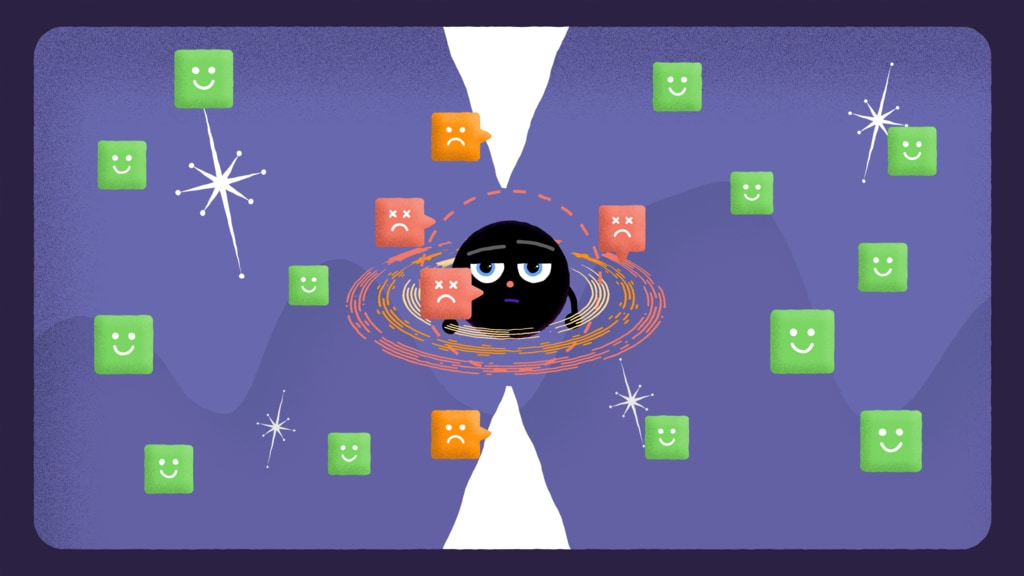
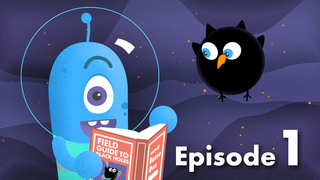
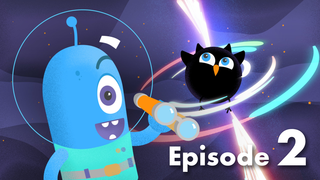
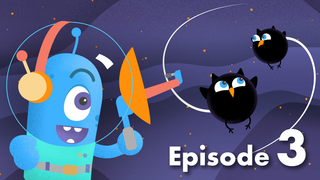
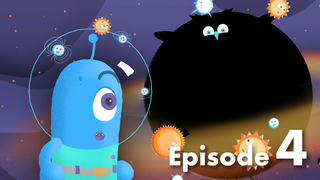
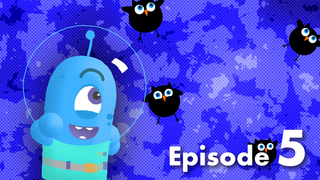
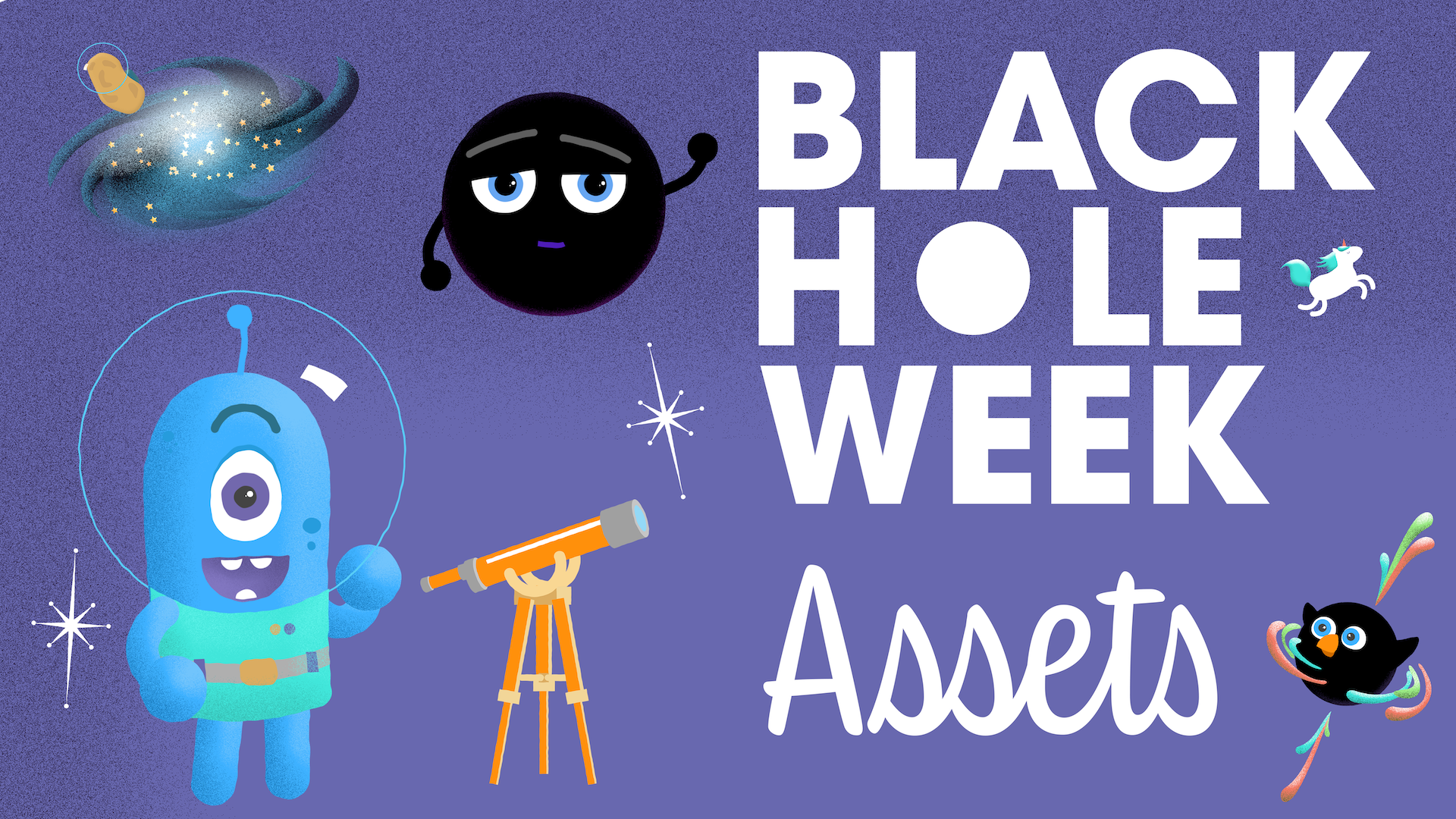
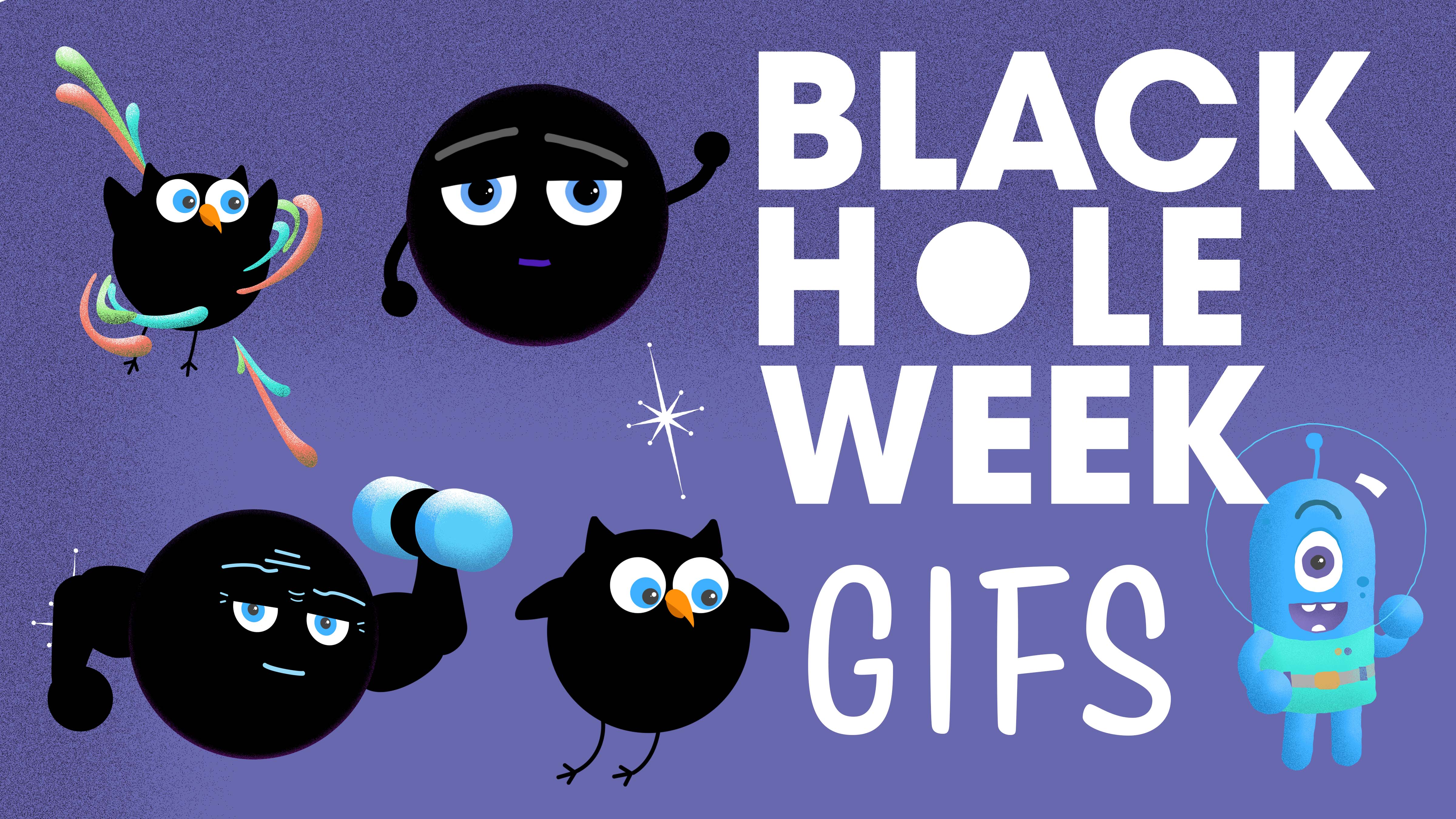
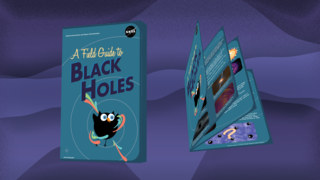
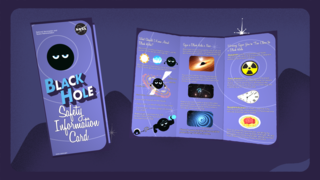

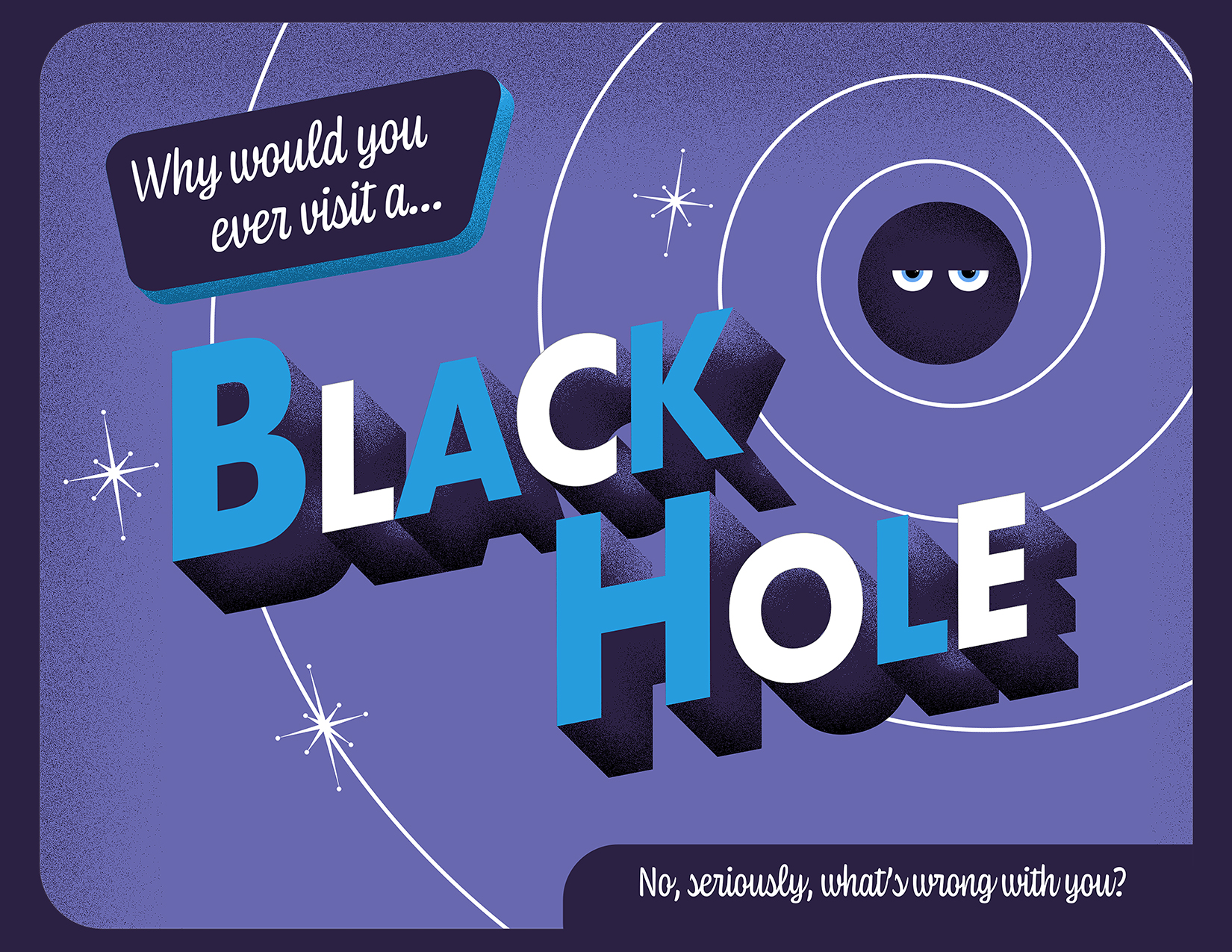
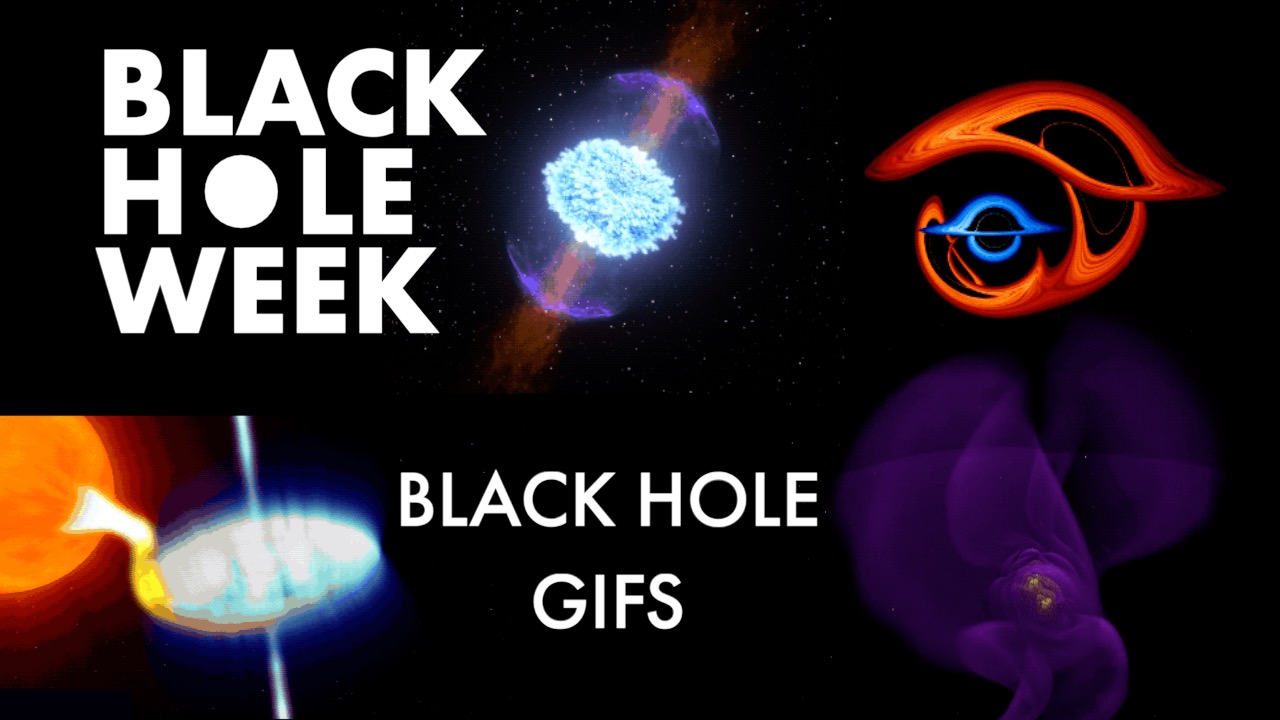
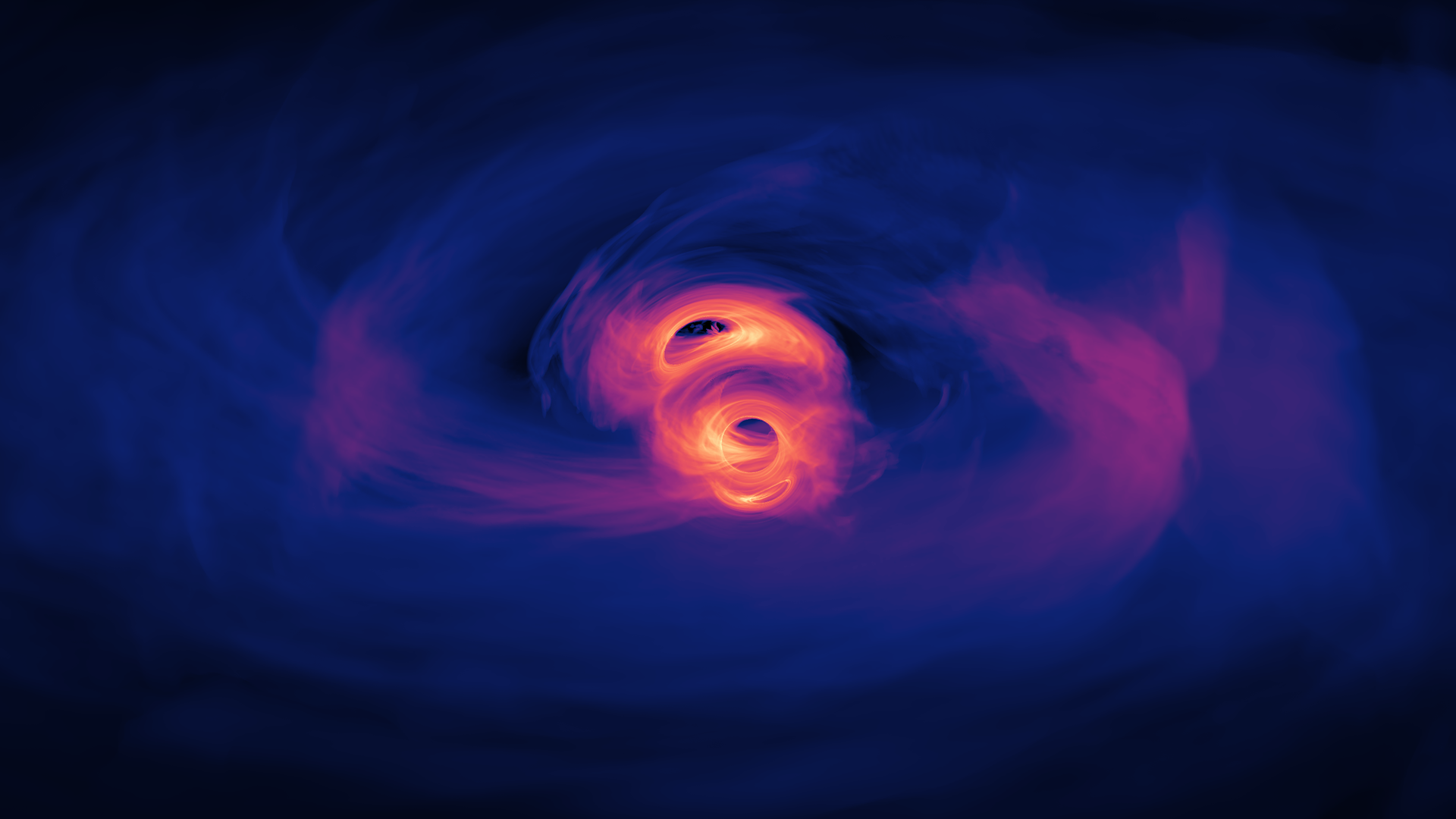
![In this flight toward a supermassive black hole, labels highlight many of the fascinating features produced by the effects of general relativity along the way. This supercomputer visualization tracks a camera as it approaches, briefly orbits, and then crosses the event horizon — the point of no return — of a supersized black hole similar in mass to the one at the center of our galaxy. Credit: NASA's Goddard Space Flight Center/J. Schnittman and B. PowellMusic: “Tidal Force,” Thomas Daniel Bellingham [PRS], Universal Production Music“Memories” from Digital Juice“Path Finder,” Eric Jacobsen [TONO] and Lorenzo Castellarin [BMI], Universal Production MusicWatch this video on the NASA Goddard YouTube channel.Complete transcript available.](/vis/a010000/a014500/a014576/14576_PageThumbnail.jpg)
